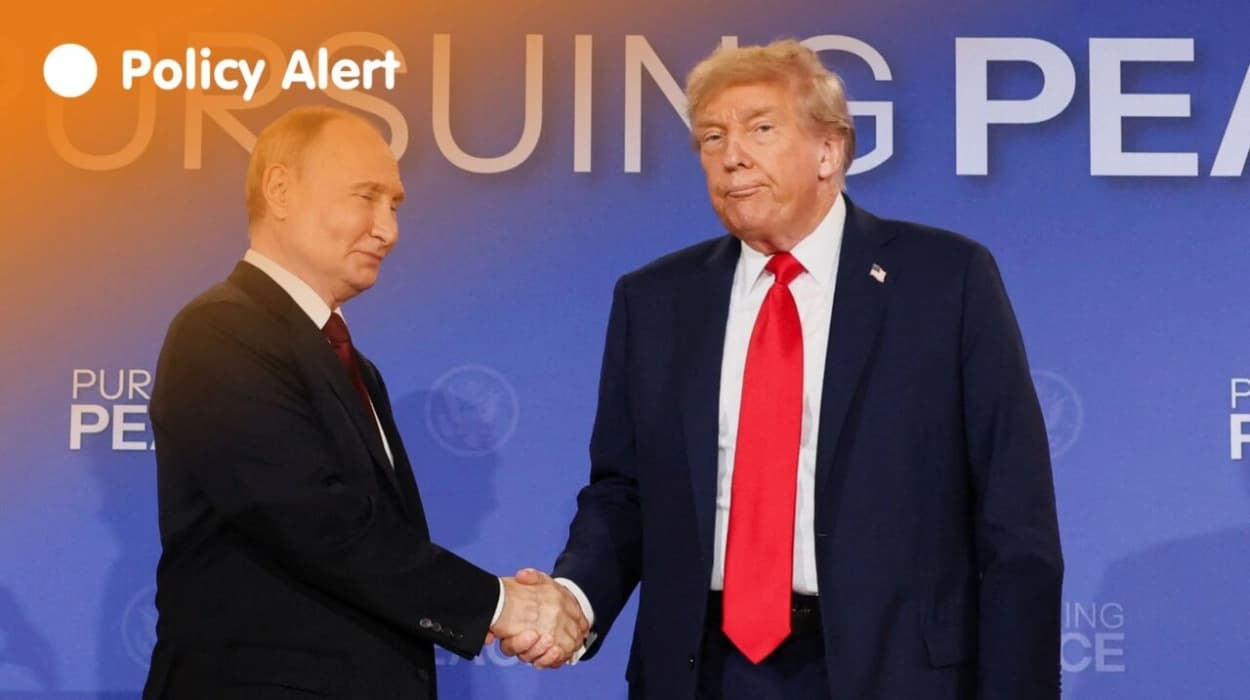The Alaska Summit on August 15, 2025, between U.S. President Donald Trump and Russian President Vladimir Putin marked a significant moment in international diplomacy, yet it underscored the deep complexities and challenges facing Europe and the broader global order. Held at Joint Base Elmendorf-Richardson in Anchorage, Alaska, this highly anticipated meeting initially raised hopes for progress on the Russo-Ukrainian War but ultimately produced no breakthroughs, leaving many observers pondering the broader lessons for Europe caught in the geopolitical crossfire.
The summit was notable for being the first time a Russian president visited U.S. soil since the 2022 invasion of Ukraine, alongside President Trump’s return to the world stage as the sitting U.S. president following his reelection in 2024. Yet, despite the grandeur of the occasion — highlighted by the red carpet welcome and an impressive flyover of F-22 Raptors and B-2 bombers — the outcome left little to celebrate.
A Grand Entrance but No Grand Agreement
President Trump publicly welcomed President Putin with warmth, applauding and shaking hands on the Alaska tarmac, gestures that signaled a thaw in relations and a diplomatic gesture to an often-isolated Russian leader. Putin’s attendance was a symbolic victory, signaling a partial reintegration into global dialogue despite an ongoing International Criminal Court (ICC) arrest warrant for alleged war crimes. The summit included their top aides, emphasizing the weight of the discussions and the desire for a comprehensive approach.
Nevertheless, the talks yielded no ceasefire agreement or concrete pathway toward peace in Ukraine. Trump intimated that the responsibility now lies with Ukraine to cede territory to end the conflict, a stance that drew backlash from many European allies who view such concessions as politically and morally unacceptable. Trump’s assertion that “there’s no deal until there’s a deal” underscored the impasse and the ambiguity surrounding future negotiations.
European Concerns and Lessons Learned
European leaders and analysts largely viewed the summit with skepticism. Finland’s Foreign Minister Elina Valtonen described the event as a “victory for Putin,” noting Moscow’s refusal to compromise or even meet Ukraine’s President Zelenskyy. The summit highlighted deep rifts between Western allies over how to respond to Russia’s aggression, with Europe wary of any détente that might embolden Putin or undermine Ukrainian sovereignty.
Valtonen remarked,
“The Russians weren’t willing to sacrifice anything of their goals. They aren’t even willing to meet with President Zelenskyy.”
The summit’s failure to produce progress alarmed many European capitals already grappling with the multifaceted security, economic, and humanitarian fallout from the war.
Moreover, the summit illuminated the persistently divergent priorities and approaches within the Western alliance. While Trump offered a relatively conciliatory approach toward Russia, many European leaders emphasized the importance of maintaining a united front of sanctions, military assistance to Ukraine, and diplomatic isolation of Moscow to prevent further escalations.
The Strategic Implications for Europe
The Alaska summit exposed Europe’s precarious position amid great power competition. While European nations continue to bear the brunt of the Ukraine conflict through direct security threats and refugee flows, the summit’s outcome indicated a potential reconfiguration of U.S. engagement in Europe’s security matters. Trump’s openness to negotiations that could involve territorial concessions was seen by many as undermining the firm stance of European allies.
The summit also cast a spotlight on the fragile and complicated dynamics that Europe must navigate between relying on U.S. military and diplomatic support and managing relations with Russia. The visit itself — held on a U.S. military base rather than a civilian venue — symbolized the continuing militarization of diplomacy in the region.
Russia’s Unyielding Stance
For Russia, the summit was unequivocally a display of resilience and strategic patience. Putin used the occasion to reinforce Moscow’s demands and reject Western narratives about the conflict, staying firm on retaining control over contested territories in Ukraine. Russian officials also suggested the summit could lead to nuclear arms control discussions, including the renewal of the New START treaty, although no concrete agreements materialized.
Putin’s presence on American soil was itself a message: despite Western sanctions and isolation attempts, Russia remains a key player on the global stage. The summit's proceedings, including Putin’s choice to ride in Trump’s limousine, were interpreted by some commentators as signaling a symbolic partnership or at least a mutual respect between the two leaders.
The Human Cost and Geopolitical Realities
While diplomatic pageantry dominated media coverage, the summit’s failure underscored the harsh realities on the ground, where millions of Ukrainians continue to face displacement, destruction, and loss of life. The ongoing conflict fuels Europe's energy insecurity, economic turbulence, and persistent threat of spillover violence.
In this context, the summit's lack of concrete results extended beyond bilateral U.S.-Russia relations; it imposed a cautionary tale for Europe on the limits of summit diplomacy without genuine commitment to conflict resolution. European policymakers face increasing pressure to bolster defense capabilities, deepen energy independence, and maintain humanitarian support to Ukraine despite uncertain diplomatic horizons.
Looking Ahead: Europe’s Strategic Options
The lessons from Alaska signal that Europe must continue to reinforce its strategic autonomy while relying on transatlantic ties. Strengthening NATO, investing in defense technology, and supporting Ukraine are seen as critical steps while preparing for a diplomatic long game with Russia.
Finnish Foreign Minister Valtonen aptly summarized these imperatives by stating,
“An end to Russia’s full-scale invasion of Ukraine looks very unlikely now,”
underscoring the necessity for Europe to brace for prolonged conflict and complex geopolitical challenges.
As the world waits to see if further trilateral talks between Trump, Putin, and Zelenskyy might occur, the Alaska summit remains a stark reminder of the difficulties in bridging divides between Moscow and the West — a reality that European countries must continuously factor into their foreign and security policies.

